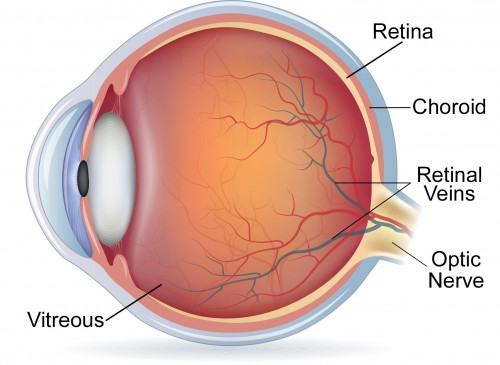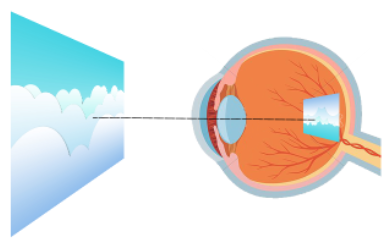What is the Retina? | Review of the Retina
Macular degeneration and diabetic retinopathy are diseases of the retina.
The retina is the light sensitive tissue that lines the inside of the eye. Light 
entering the eye focuses on the retina producing images. The resulting light signals are then transmitted from this light sensitive tissue, through the optic nerve to the brain. This is the basic pathway of vision.
Parts of the Retina
The retina is a laminated tissue. It has 3 different functional layers.
The outermost layer is the photoreceptor layer, made up of rods and cones. These cells transform the light energy into electric signals that are processed and then sent to the brain where vision is completed. Topographically, the center of the retina is known as the macula. It is here that central vision and detailed vision occur.
How Does the Retina Function?
Both the cornea and our natural lens focus light onto the retina. Sometimes patients require contact lenses and glasses to help with this process.
These structures and the vitreous body that fills the center of the eye need to be clear in order for the light to get to the retina. The most common problem interfering with this process is cataract, an opacification of the lens.
In the normal situation, the retina must be healthy for us to see well. Despite the thickest and best glasses, if this tissue is not completely healthy, we will not see.
Retinal Diseases
The retina acts like a film or digital card inside a camera – it receives the light  and forms the images that are turned into electric signals which are sent to the brain. To function normally the retina needs to be properly nourished (see above regarding circulation) and remain attached.
and forms the images that are turned into electric signals which are sent to the brain. To function normally the retina needs to be properly nourished (see above regarding circulation) and remain attached.
In the human eye, the retina is nourished by it’s own blood vessels that feed the inner layers, and by the blood vessels of the choroid, that feed the outer layers of the retina. The inner blood vessels are the ones that are afflicted by diabetic retinopathy. Vascular occlusions, both vein and artery occlusion, can lead to loss of normal blood supply to the retina and lead to blindness.
The choroidal blood vessels are the source of fluid and hemorrhage in wet age-related macular degeneration (AMD). Diseases of the choroid can cause blindness as well.
If the retina falls off the inside of the back of the eye (retinal detachment), vision is lost. If the macula (the central portion of the retina) is not smooth, vision is distorted. If the macula (the central portion of the retina) is wet due to AMD, diabetes, or high blood pressure, vision is blurred. If the macula gets a central hole, there is a central blind spot.

